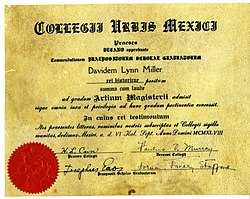This article needs additional citations for verification .(July 2018) |

Mexico City College was founded in 1940, as an English-speaking junior college in Mexico City, Mexico.
In 1946, the college became a four-year Bachelor of Arts degree-awarding institution, changing its name to University of the Americas in 1963. In 1968, the college became Universidad de las Americas, as it began the transition into a Spanish-speaking institution, culminating in its move to Cholula, Puebla, in 1971.
Because of internal problems, the campus split in 1985 into two separate institutions:
- UDLA – Universidad de las Américas, A.C., in Mexico City, Mexico.
- UDLAP – Universidad de las Américas Puebla, in Cholula, Puebla, Mexico.